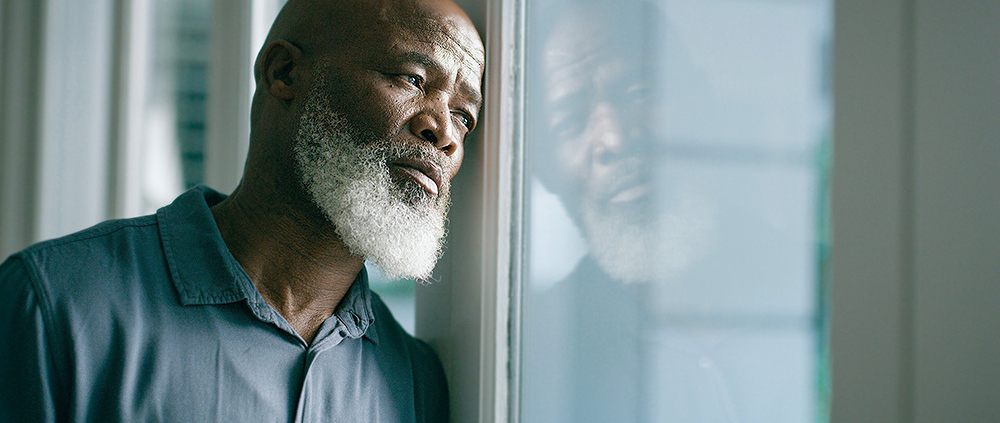Recognizing Social Isolation and Loneliness in Yourself and Those Around You
In a world that has become increasingly interconnected digitally, rising social isolation and loneliness has become a pressing concern. As discussed in our last article on the topic of social isolation and loneliness, Dr. Vivek H. Murthy, the 19th and 21st Surgeon General of the United States, has been a vocal advocate for addressing these issues, emphasizing the profound impact they have on individual and societal health. As we navigate the aftermath of the COVID-19 pandemic, the importance of identifying symptoms of social isolation and loneliness in ourselves and those around us has never been more critical.
Dr. Murthy’s insights reveal a stark reality – loneliness is not just a fleeting emotion but a public health concern with far-reaching consequences. Loneliness is associated with a higher risk of cardiovascular diseases, dementia, stroke, depression, anxiety, and premature death. Its effects are comparable to smoking up to 15 cigarettes a day and surpass those linked to obesity and physical inactivity. The consequences of a society lacking social connection are evident in diminished performance, productivity, and engagement in schools, workplaces, and civic organizations.
Glossary of Terms:
To comprehend the intricacies of social connection, it’s essential to be familiar with key terms such as belonging, collective efficacy, empathy, social capital, and social cohesion. These concepts form the foundation for understanding the dimensions of human connection and the potential risks associated with its absence. All terms were taken directly from the Department of Health and Human Services’ report on Social Isolation and Loneliness.
Belonging: A fundamental human need—the feeling of deep connection with social groups, physical places, and individual and collective experiences.
Collective Efficacy: The willingness of community members to act on behalf of the common good of the group or community.
Empathy: The capability to understand and feel the emotional states of others, resulting in compassionate behavior.
Loneliness: A subjective distressing experience that results from perceived isolation or inadequate meaningful connections, where inadequate refers to the discrepancy or unmet need between an individual’s preferred and actual experience.
Social Isolation: Objectively having few social relationships, social roles, group memberships, and infrequent social interaction.
Social Capital: The resources to which individuals and groups have access through their social connections. The term social capital is often used as an umbrella for both social support and social cohesion.
Social Cohesion: The sense of solidarity within groups, marked by strong social connections and high levels of social participation, that generates trust, norms of reciprocity, and a sense of belonging.
*note: for a more detailed glossary of key terms please refer to the Department of Health and Human Services’ report on Social Isolation and Loneliness linked in the cited sources
:
Trends and Indicators:
Trends in community involvement, changes in social networks, and participation over time offer valuable insights into the state of social connection. Dr. Murthy’s advisory highlights the decline in social participation, particularly among young people, and the impact of the COVID-19 pandemic in exacerbating these trends.
The COVID-19 pandemic acted as a magnifying glass on the issue of social isolation. It disrupted lives, postponed celebrations, and shifted education online, leaving many feeling lonely and isolated. Frontline workers, parents, and those at higher risk faced unique challenges, emphasizing the diverse impact of isolation.
Identifying Symptoms of Loneliness and Social Isolation:
1. Emotional Distress:
- Anxiety and Stress: Persistent feelings of anxiety and stress, especially in social situations.
- Depression: Prolonged periods of low mood, loss of interest in activities, and feelings of hopelessness.
2. Disruption in Daily Life:
- Altered Routines: Sudden changes in daily habits, withdrawal from regular activities.
- Decline in Productivity: Reduced engagement and performance at work or school.
3. Impact on Relationships:
- Family Dynamics: Changes in familial connections, feeling distant or closer to family members.
- Social Withdrawal: Avoidance of social interactions, including online communication.
4. Physical Health Changes:
- Sleep Disturbances: Disrupted sleep patterns or chronic insomnia.
- Weight Fluctuations: Unexplained weight loss or gain.
Support and Intervention:
Recognizing symptoms is the first step toward addressing social isolation and loneliness. Individuals experiencing these signs should consider reaching out to friends, family, or mental health professionals for support. Engaging in activities that foster social connections, whether through volunteering, joining clubs, or participating in community events, can be instrumental in breaking the cycle of isolation. In the next article we will discuss methods to support yourself and those around you.
Building a Connected Future:
As we emerge from the pandemic era, the lessons learned provide an opportunity to rebuild social connections intentionally. Prioritizing social infrastructure, engaging in community activities, and fostering relationships can contribute to a healthier and more connected society. At Sabre88, and more specifically within Sabre88, Discover65+, we are dedicated to sharing the growing concern of Social Isolation and Loneliness, specifically as it relates to the United State’s growing population of older adults.
In the words of Dr. Murthy, “Our future depends on what we do today.” Identifying and addressing symptoms of social isolation and loneliness is not just a personal responsibility but a collective endeavor to build a society where everyone feels seen, heard, and connected.
Cited Sources:
* In some instances this document is used as the primary source and in some instances this document is used as a secondary source from which information has been provided.
Image Source:


